Mabeshte Revisited
4October 29, 2015 by Tom McKenna
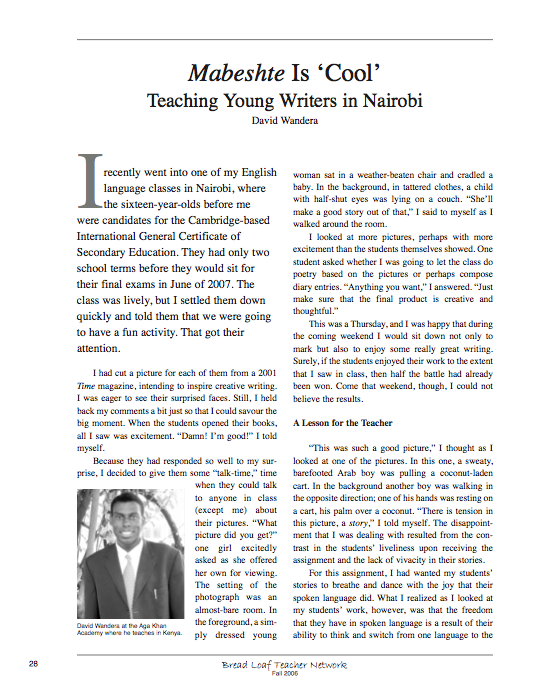
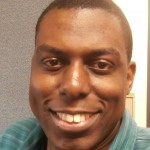 by David B. Wandera
by David B. Wandera
MA ’08, MLitt ’13
Doctoral Candidate, The Ohio State University
Several years have passed since I wrote an article under the title, “Mabeshte is Cool: Teaching Young Writers in Nairobi.” In this present article I revisit one key concept that underpins that original article and which frames my approaches to practice, i.e., the development of written language happens in social contexts. I also reflect on my journey as a teacher-researcher over the period since that initial article came out. To recap, the word mabeshte comes from Sheng, an informal way of speaking practiced by youth in urban settings in Kenya. So what does “cool” have to do with it? This present article, which is in the form of musings, covers some signpost moments and illuminates realizations that continue to contour my understanding of teaching and learning. I include here some visualizations as evidence of my own growing use and apprenticeship of digital tools and to illustrate my increasing interest in the role of various communicative modalities.
When I wrote the original “Mabeshte is Cool,” I was teaching at a private, middle income, co-ed, day school in Nairobi.
I first visited Middlebury College, Bread Loaf School of English, in 1999 under the stewardship of Lou Bernieri and the Andover Bread Loaf Writing Program. Since that time, a lot has changed, and a lot continues to stay the same. Time has definitely gone by; I have facilitated learning for several groups of students who have proceeded beyond high school exams on to different places and lives in various parts of the world. I myself have continued onward in my career by moving from teaching at the school in Nairobi to joining a doctoral program—I am now a teacher-researcher here in Columbus, Ohio. One of the things that has stayed the same is my association with Bread Loaf Teacher Network (BLTN). Another is the work that BLTN does to connect educators and their classes across boundaries and borders through an assortment of exchanges, projects, and conferences. As Dixie Goswami says in this following video, this kind of network really is about relationships:
BreadNet (among other online platforms) continues to serve as an online interface, which puts students and teachers in productive conversations with each other. In the course of my teaching career, I have employed various digital spaces in linking students in Nairobi to others in Alaska, New York City, Mumbai, Alberqueque, South Africa, etc. I have strived to build social relationships, especially around literature and literacy, and to encourage young people to engage in exploratory, speculative, interactive writing across cultural and geospatial differences. By establishing a social context of writing through various collaborative BLTN projects, I have learned to reach outside the classroom and into the lives of students in order to tap into the resourcefulness of the precious knowledge and understanding that they bring into the classroom. I have also learned to reach beyond the world of mandated testing in order to make education relevant to teenagers and young people. Inspired by the Bread Loaf experience and in the spirit of bringing Bread Loaf back to our classes, we (Patricia Echessa-Kariuki and I) have organized Nairobi Slice Writing workshops where our students would spend a day in an idyllic setting called Sagana, an hour’s drive out of the bustling Nairobi, writing and sharing writing. We would write with our students and celebrate each other as writers.
One advantage of belonging to BLTN is that moving away from Nairobi and from teaching at the high school level does not mean that I do not have access to classroom contexts. Not too long ago, Adam Musser (BLTN teacher who used to teach in Cleveland) and I undertook a project, which we refer to as “A Kenyan Storm Thunders in a Cleveland Classroom.”
- With Adam Musser at St. Martin De Porres Sch. in Cleveland, OH
- Discussing the poem “A Sudden Storm” by Kenyan poet by Puis Oleghe with Adam Musser’s students in Cleveland, OH
In a jointly-authored description of the project Adam and I wrote the following.
More recently, as 2015 coordinator of BLTN Vermont, I shared an office on the Ripton campus with Shel Sax, Dixie Goswami, Dianne Baroz, and Melissa Nicklaw. I was also the on-site coordinator of the Ken Macrorie BLSE Writing Center and had the privilege of serving as one of the director’s assistants to Emily Bartels. In these various capacities I moved from staff meetings to the Barn to various event-venues. I spent some time re-reading Michael Agar’s Language Shock. Understanding the Culture of Conversation and reflecting on what it means to me now and to my inquiry in the original “Mabeshte is Cool” article. Ten years after this article, after various enriching experiences with Bread Loaf and BLTN that have culminated in two BLSE degrees and a large Bread Loaf family, and currently as a doctoral candidate at The Ohio State University, the connection between “Mabeshte is Cool” and my current research is becoming clear. I have learned that instead of engaging in prescriptive, direct, routinized teaching of writing, it is more beneficial to work with students and to undertake expressive and exploratory conversations that endure over time. These various interactive, sustained, dialogic engagements that I have undertaken (with my students and with colleagues) across cultural and geospatial differences illuminate on the core of language development. Over time, evidence is accumulating to make the case for students’ engagement in writing across differences and how such an undertaking leads to their development of critical thinking, hypothesizing, and speculating, among other skills. Aside from bringing back to my students a new conception of teaching and learning and writing, I have started being a researcher through listening, observing, writing down, analyzing, and collaboratively interpreting findings. This is a watershed moment in my development as a scholar, who is enacting a belief that listening to, observing, and collaborating with my students leads to further understanding about teaching and learning.
To illustrate this point, I will now refer to a current research initiative, the Alaska-Kenya collaboration, through which I analytically and interpretively reflect on how implicit and explicit sociocultural practices intersect with intercultural communication. Evidence for this intersection bears itself out in language use by students in a BLTN exchange between my class in Nairobi, Kenya, and Brendan McGrath’s class in Aleknagik, Alaska. It also bears itself out in the reflections made by participants of the research project. This collaboration is fascinating in many ways, including the sheer distance between the collaborating classes—Aleknagik and Nairobi are over 10 time zones apart.
Through the Alaska-Kenya collaboration, students sent one another theme-based emails, images, stories, descriptive accounts, poems, etc. An analysis of their dialogic, conversational, speculative, and exploratory writing, together with various cultural artifacts that were invoked or employed, has led to a wealth of information on strategies of intercultural communication and spatialized language use. I have invited students from both Alaska and Nairobi, together with Brendan, to reflect with me on the data emanating from this exchange. Stepping back and looking together at what we produced offers myriad understandings of the roles of literacy in our world of transcultural flows and constant change.
These participants and I have discovered that the resourcefulness of a writing exchange across cultural and geospatial differences endures over a long time. For example, more than eight years after the actual project, we have found some implicit disconnects in communication that did not emerge in the moment and have emerged after reflexively returning to data from this project. My analysis of this data is also inspired by various Bread Loaf School of English and Ohio State scholars, too numerous to mention. I will, however, mention that this summer, Dean Jaqueline J. Royster, Oskar Eustis, and Michael Armstrong spearheaded an illuminating conversation, which was moderated by Dixie Goswami, on the nature of the public space. They were joined by Chantal Kenol from Haiti and Rex Lee Jim from the Navajo Nation, who offered various situated instantiations of the complexities and workings of the public space in their experiences.
Inspired by this conversation, I wrote and submitted, to the American Education Research Association (AERA), an iteration of my dissertation under the title of “The Alaska-Kenya Collaboration: Inclusive Pedagogy as a Hallmark of the Classroom Public Space.” In that submission, I make a case for the classroom as an inclusive public space through exemplifying the learning space model of the Alaska-Kenya collaboration, which offers opportunities for intercultural interactions where students’ in-class and out-of-class experiences, together with their supra-local connections constitute a productive public space. Collaborating with my former students has offered opportunities to explore how intellectual development, which is itself a form of social transformation, is evidenced through the creativity, curiosity, and pleasure students bring to, and find, in exchanges such as the Alaska-Kenya collaboration.
In 2004, I started attending the BLSE summer program in order to study literature, to educate my imagination, and to enter conversations with others and with texts. I ended up doing these, together with joining BLTN, a dynamic network of colleagues and their learners, and have made dear friends, such as Dixie and Andrea Lunsford. I continue to learn a lot from my connections there.
Whereas some public school teachers in the U.S. may be monolingual or come from monolingual backgrounds, increasingly, classrooms are becoming more diverse. There is much to learn from reflecting on instantiations of meaning of sharing across cultural and geospatial differences, e.g., the Alaska-Kenya collaboration. These kinds of collaborations spotlight evidence, which disrupts notions of homogenous speakers of English, challenges the hegemony of English as a lingua franca, and affirms the pluralization of “English,” i.e., World Englishes (Crystal, 2003). They certainly shift conversations of teaching/learning from a western centric orientation and expand horizons for both teachers and students. BLTN collaborations across differences have the potential for disrupting some traditional theorizations and conceptualizations of learning and of language use that come from such monolingual normative positions.
I will now end this reflection where I started, i.e., by saying that learning as a social practice is about people, and teaching should offer extended and multiple ways for students to interact with texts. That is what is cool about this! I strive to move my teaching away from the binary of traditional versus nontraditional spaces towards considering the classroom as a public space that is a third space or a point of productive intersectionality. In such a space, students possess capabilities and capacities, and their youth texts are valid sites for intellectual engagement. Students also read themselves and the world in critical ways. Michael Agar argues that communicating across language and culture opens avenues for different ways of thinking and imagining realities.
Category Fall 2015, Featured | Tags:
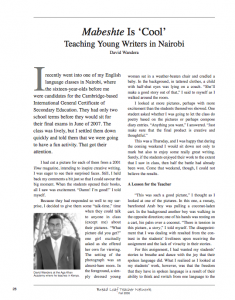
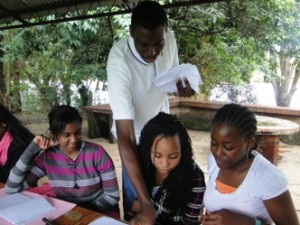
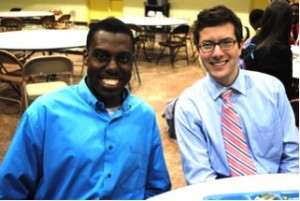
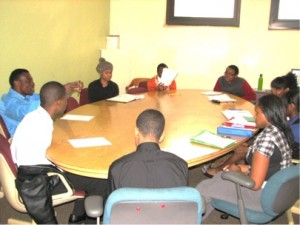
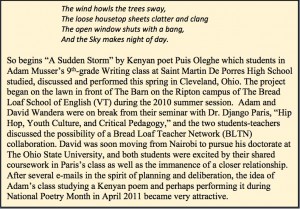
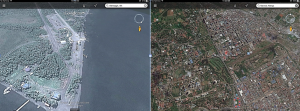
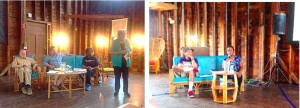

David–What a great reminder to help our students reach out over “cultural and geospatial” divides to create dialogue with others. I needed your reminder to assuage my despair over being charged with teaching a unit centered on justice and then being told that we cannot comment on the current political climate. How can an educator stay neutral when our politicians are calling outright bigotry to the surface? For most of my students, this race is so unsettling and upsetting. The columnists persist in asking: what are you doing to address this surge of fear and bigotry? I keep asking myself: how can challenge my students to examine and confront these sentiments without letting themselves fall victim to anger and cynicism? I’m teaching Mockingbird to two classes and Things Fall Apart to another. I wonder if I could stir up some dialogue rather spontaneously for my students with kids outside Kentucky…Thanks for reminding me how powerful a BLTN exchange could be right now! Best to you, David.
David–What a great reminder to help our students reach out over “cultural and geospatial” divides to create dialogue with others. I needed your reminder to assuage my despair over being charged with teaching a unit centered on justice and then being told that we cannot comment on the current political climate. How can an educator stay neutral when our politicians are calling outright bigotry to the surface? For most of my students, this race is so unsettling and upsetting. The columnists persist in asking: what are you doing to address this surge of fear and bigotry? I keep asking myself: how can challenge my students to examine and confront these sentiments without letting themselves fall victim to anger and cynicism? I’m teaching Mockingbird to two classes and Things Fall Apart to another. I wonder if I could stir up some dialogue rather spontaneously for my students with kids outside Kentucky…Thanks for reminding me how powerful a BLTN exchange could be right now! Best to you, David.
I’ve just learned that David is to give three talks based on some of the work he references in this piece. Congrats, David. Maybe some of you can catch one or more of these upcoming presentations. DAVID WANDERA is Cool!
The Literacy Research Association’s 65th Annual Conference LRA~Carlsbad, California.
(December 2 – 5, 2015) Title: “Dialogic Intercultural Imagination: Exploring Communication Strategies in an Alaska-Kenya Collaboration.”
60thAnnual Conference of the Comparative and International Education Society (CIES) Vancouver, Canada (March 6 – 10, 2016) Title:~”Sharing Transnational Lives: Exploring Languacultural Literacy in an Alaska-Kenya Exchange.”
The 2016 AERA Annual Meeting (Division G – Social Context of Education/Division G – Section 3)~Washington, DC. ~(April 8-12, 2016 )Title:~The Alaska-Kenya Collaboration: Inclusive Pedagogy as a Hallmark of the Classroom Public Space.”
I’ve just learned that David is to give three talks based on some of the work he references in this piece. Congrats, David. Maybe some of you can catch one or more of these upcoming presentations. DAVID WANDERA is Cool!
The Literacy Research Association’s 65th Annual Conference LRA~Carlsbad, California.
(December 2 – 5, 2015) Title: “Dialogic Intercultural Imagination: Exploring Communication Strategies in an Alaska-Kenya Collaboration.”
60thAnnual Conference of the Comparative and International Education Society (CIES) Vancouver, Canada (March 6 – 10, 2016) Title:~”Sharing Transnational Lives: Exploring Languacultural Literacy in an Alaska-Kenya Exchange.”
The 2016 AERA Annual Meeting (Division G – Social Context of Education/Division G – Section 3)~Washington, DC. ~(April 8-12, 2016 )Title:~The Alaska-Kenya Collaboration: Inclusive Pedagogy as a Hallmark of the Classroom Public Space.”